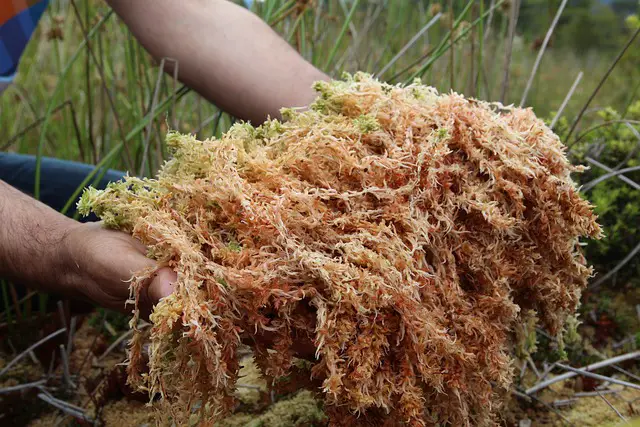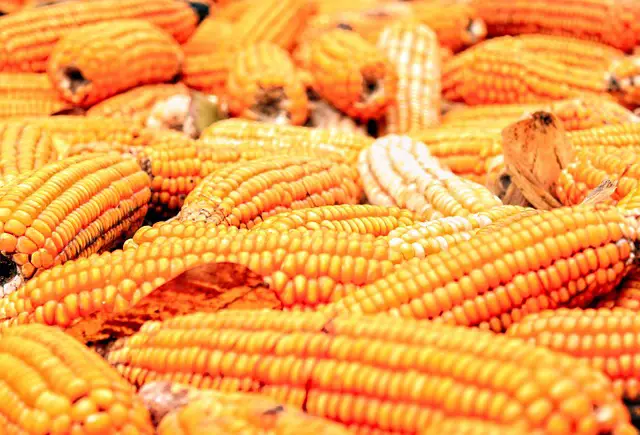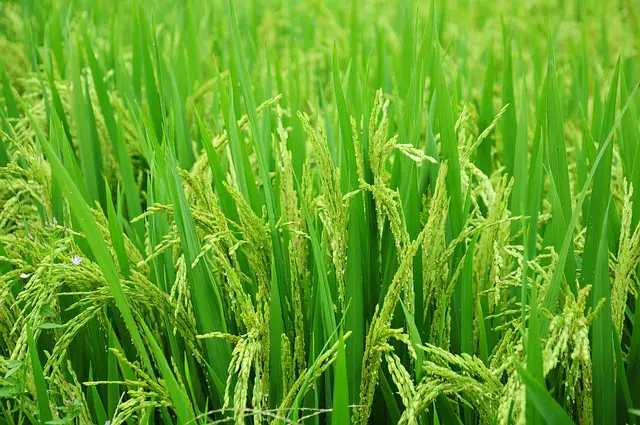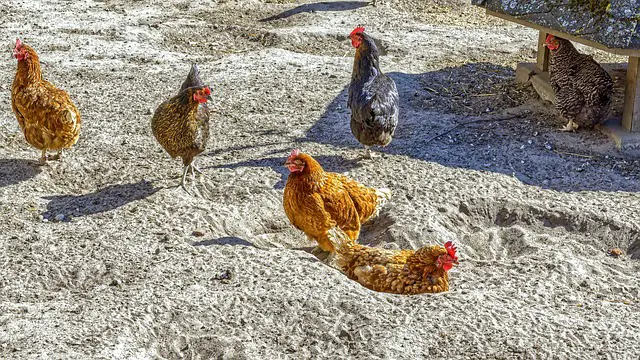Providing fresh, clean chicken coop bedding is one of the most important elements of coop maintenance. Bedding absorbs moisture, insulates chickens’ bodies from the ground, and cushions their feet. The right bedding also discourages pests and prevents diseases.
With so many bedding options available, how do you choose? Let’s explore the 10 best chicken coop bedding materials and their unique benefits. Consider factors like cost, availability, absorbency, smell control and ease of cleaning as you evaluate choices for your flock.

- Wood Shavings
Wood shavings like pine and cedar are a popular bedding choice for many backyard chicken keepers. Soft and absorbent, wood shavings cushion chickens’ feet and control odors. They also insulate well during colder months.
Pine shavings are most widely available and budget-friendly. Avoid shavings from lumber mills, which may contain harmful phenols. Cedar shavings deter pests but can be overpowering inside a coop.
Spot clean soiled areas and stir shavings regularly. Replace completely every 2-4 weeks. Wood shavings compost well or can go directly in the garden. Overall an affordable, easy coop bedding.

- Straw
For those with access to straw, it makes wonderful insulating bedding. Barley, oat and wheat straw are soft and absorb moisture better than hay. Make sure straw is seed-free to prevent sprouting.
Straw controls odors and cushions feet well. Its hollow structure provides insulation against the cold. Slightly prickly straw also encourages chickens, like the gold chicken breeds, to scratch and nest. Being light, chickens scatter straw easily which requires more frequent replacement.
Straw composts rapidly, breaking down into nutritious mulch. Just check straw quality carefully to avoid mold or pests. For a traditional coop lining, straw is a great choice.

- Sand
An inexpensive natural option, sand makes a fine gritty base in a coop. Sand absorbs moisture and dries out parasite eggs and manure. Chickens enjoy digging in sand.
Be sure to use child-safe or horticultural sand. Build up a layer at least 3 inches deep, allowing the sand to shift and settle. Small dust particles necessitate good ventilation. Completely replace sodden sand as needed to prevent bacterial issues.
Sand requires more specialized maintenance but controls odors well when kept dry. An ideal scratching and dust bathing substrate for chickens.

- Peat Moss
Fine and fibrous, peat moss offers many advantages as coop bedding. It feels pleasantly soft under chickens’ feet as they walk and hop up to roost. Excellent moisture absorption helps keep the coop clean and dry.
Peat moss resists compaction and inhibits the growth of harmful molds and fungi. Antimicrobial properties reduce odors. However, dry peat moss produces some dust. Wear a mask when handling.
Sourcing sustainable peat moss is possible but requires caution. Or use coconut coir as an eco-friendly alternative. Overall an excellent absorbent bedding.

- Hardwood Mulch
Mulches like gorilla hair or shredded hardwood make a suitable base for chickens that mimics the forest floor. Coarse and chunky mulch provides circulation underneath while absorbing messes on top.
Ensure any mulches are chemical-free, as chickens tend to nibble bedding. Mulch is prone to mold if allowed to become damp, so frequent replacement is key. A blend with sand improves drainage.
Free from local arborists or garden stores, mulches are an affordable option, though labor-intensive to install. Best suited for deep litter techniques with heavy layers. Offers great foot support if sized properly.
- Straw Pellets
For ease of handling, straw pellets concentrate the absorbency of straw into an easy-to-manage form. Made from compressed wheat, barley or rice straw, the pellets rapidly soak up moisture.
Their concentrated nature means pellets provide more absorption per square foot. The pellets loosen into a fluffy litter when wet. Scoop soiled spots and top dress with fresh pellets as needed.
Pellets produce little dust and resist compaction under chickens’ feet. They also discourage flies trying to lay eggs. A good odor fighter that breaks down readily in the compost. An efficient modern bedding option.

- corncob bedding
Made from the center of corncobs, corncob bedding offers excellent absorbency and odor control. The granular texture doesn’t compact into muck. Corncob pieces range in size for lofty yet sturdy bedding.
Being sterile with no oils, corncob bedding won’t go rancid or mold readily. It contains no dust. The coarse pieces gently exfoliate chickens’ feet. Good insulation properties. Disadvantages are affordability and availability.
Becoming more common, corncob bedding is worth seeking out for its stellar moisture absorption. Composts well when soiled. Provides comfort and foot health benefits.

- Rice Hulls
The rough, fibrous hulls surrounding rice grains make an unusual but effective bedding. Rice hulls are absorbent yet fast drying. Their gritty texture gives traction underfoot.
Rice hulls resist compaction while allowing airflow within the litter. Their low density means frequent fluffing though. Avoid super fine rice hull dusts, which are respiratory irritants.
Often sold as horse bedding, rice hulls are reasonably affordable and gaining popularity. Naturally repel insects. Quick to compost. The spiky texture takes some adjustment but offers cushion and odor control.

- Leaf Litter
For free, readily available bedding, gather leaves from your property or neighbors. Forest humus makes a natural chicken coop substrate. Use leaves that are already brown, never green.
Leaf litter provides insulation and cushions landings when chickens fly down from perches. The leaves shift and settle to smother odors. Their microbial action deters pathogens.
Leaf quality varies, so improve poorer leaves with amendments like sand or wood ash. Chopped oak or beech leaves are ideal choices. Remove soiled leaves promptly to prevent dampness. Free and organic but labor intensive.
- Hemp Bedding
As industrial hemp production rises, hemp bedding offers an appealing sustainable option. The spiky texture resists compaction and absorbs liquids profusely.
Hemp bedding is highly absorbent, antimicrobial and digestible if eaten. It contains no dust. The coarse fibers scrub chickens’ feet. Made from the nutritious hemp shive, it’s perfectly safe if ingested.
Still a niche product, hemp bedding can be pricier and trickier to source. But its excellent moisture-wicking makes it worth investigating, especially for wet climates. Is compostable after use.

Key Considerations for Choosing Coop Bedding:
- Absorbency – Bedding must soak up moisture from droppings, spilled water and drinking systems.
- Odor control – Bedding should contain ammonia fumes and rotting odors from waste.
- Insulation – In colder months, bedding retains warmth radiating from chickens’ bodies overnight.
- Cushioning – Padding underfoot protects chickens’ feet and prevents calluses, foot infections and bumblefoot.
- Dust – Dusty bedding irritates airways. Opt for low to no dust options.
- Antimicrobial properties – Bedding that inhibits mold, bacteria and parasites promotes healthy chickens.
- Compostability – After soiled, bedding should break down into usable compost or fertilizer for your garden.
- Cost – Factor in both purchase price and long-term value. Bedding that lasts longer saves money.
- Convenience – How readily available is the bedding source? How much labor is involved to handle and replace it?
Take time to weigh all the factors that matter most for your flock. Many outstanding options exist to create a clean, dry, healthy chicken coop environment. With the right setup, your chickens can bed down in comfort!
Cleaning
The easiest chicken coop beddings to clean are typically:
- Sand – Can be scooped out or raked when soiled. Easy to sanitize the hard surface underneath. Needs full replacements periodically.
- Pellets – Absorbent pellets like wood or paper are easy to scoop. They break down into sawdust to remove. simplified cleaning compared to shavings.
- Hardwood mulch – Can simply be raked out when soiled. Mulch doesn’t compact. Easy sifting to remove waste.
- Peat moss – Scoopable and lightweight. Resists compaction. Antimicrobial properties slow pathogens.
- Leaf litter – Individual leaves lift out easily when soiled. No dense matting. Can till litter to redistribute.
- Straw – Scoopable texture. Lightweight so not compressed down. Removes cleanly and degrades rapidly.
Avoid beddings like sand, soil, dirt, or clay, which become heavy and dense when wet. These adhere tightly and are difficult to remove. Loose, scoopable textures clean fastest.
Winter Weather
The best chicken coop beddings for winter weather are:
- Wood shavings – Absorbent and insulating. Pine or cedar provide warmth. Avoid dust accumulation.
- Straw – Hollow stems trap air to retain heat. Soft and cushioning for their feet. Highly insulating.
- Sand – Holds warmth from their bodies and retains heat well overnight. Can mix with wood shavings.
- Peat moss – Absorbs moisture to keep coop dry. Insulating and dense packing prevents drafts.
- Hemp bedding – Excellent insulation value. Very absorbent to keep coop drier.
- Hardwood mulch – Cushiony and insulating. Mimics forest floor for natural habitat.
- Leaf litter – Leaves insulate well. Allow chickens to nestle down beneath. Free and renewable.
Avoid thinly scattered or lightweight bedding in winter. Focus on deep, dense, and fluffy bedding materials to conserve chickens’ body heat. Maintain excellent ventilation to prevent moisture buildup. Also, if you are researching chickens for your homestead or farm, you should consider these cold hardy chicken breeds.

Summer Chicken Coop Bedding Options
Here are some of the best chicken coop bedding options to help beat the heat during summer:
- Sand – Naturally cooler gritty texture. Allow chickens to dust bathe to stay cool.
- Hardwood mulch – Coarse pieces promote airflow. Mimics shady forest floor.
- Peat moss – Absorbs condensation from cool surfaces. Resists compaction when damp.
- Straw – Hollow stems provide ventilation. Chickens can nestle into the shade.
- Pine shavings – Release refreshing aromas. Good absorbency and traction.
- Rice hulls – Gritty texture doesn’t retain heat. Very breathable.
- Leaf litter – Chickens can bury themselves in the shade. Stays cooler than other beddings.
- Avoid corn cob – Holds heat and doesn’t allow airflow.
- Avoid hay – Dense matting traps heat next to chickens’ bodies.
The key is using loose, breathable beddings that resist compaction when damp. Allow chickens, like the largest chicken breeds, to dust bathe to naturally cool themselves. Provide adequate ventilation and fans. Change bedding more frequently in summer to deter pests and odors. Monitor chickens closely for signs of heat stress. With proper setup, chickens can stay comfortable even in hot summer temperatures.
Chicken Coop Bedding to Avoid
Bad Chicken Coop Beddings to Avoid
When caring for backyard chickens, selecting appropriate bedding is crucial to their health and happiness. Unfortunately, not all materials make suitable coop bedding. Some options seem appealing but cause problems down the line.
Let’s review types of bedding that should be avoided and why they don’t work well:
Hay or Straw With Pesticides
It may be tempting to use leftover hay or straw from farms as coop bedding. However, if those crops were treated with pesticides, insecticides, or chemical fertilizers, they could become hazardous to your chickens.
Chickens tend to peck and scratch through their bedding. If they ingest chemically laden straw or hay, it can poison their systems. Even minimal exposure over time could cause issues. Know your hay and straw source well or avoid using farmed bales.
Brightly Colored Paper or Cardboard
Shredded paper can work in a pinch for coop bedding. However, the inks and dyes used to color paper often contain heavy metals like lead, zinc, and chromium that could leach out. Opt for plain brown kraft paper whenever possible.
The same goes for cardboard and egg cartons. Stick to plain, untinted cardboard without glossy prints, which may contain toxins. Coloring likely uses non-toxic dyes today, but it’s still best avoided inside the coop just to be safe.
Clay Cat Litters and Mineral Litter
While cat litter seems very absorbent, the clay and crystalline silica dust in clay litters can cause respiratory issues when inhaled by chickens confined in tight spaces.
Clumping clay litter can also stick to chickens’ feet and feathers. When ingested, bentonite clays can impact gut health and create impaction risk. Mineral litters may contain perfumes and chemicals as well.
Yesterdays News Paper Pellets
This commercially marketed paper pellet horse bedding seems like an easy coop option. However, the glossy paper stock used often contains colored inks.
The gloss also prevents the pellets from fully absorbing liquid and expanding. The larger pellet size doesn’t break down readily in the compost. You can find safer paper pellet options made from unprinted kraft paper.
Conifer Wood Chips or Sawdust
Never use sawdust or chips from pine, cedar, and other conifers in the coop. They contain volatile phenols and resins that can irritate chickens’ respiratory systems.
Cedar and pine also naturally contain the organic pesticide thujone. In small doses this is safe, acting as a repellent, but extended exposure or accumulation may harm chickens. Stick to safe hardwood chips.
Corn Cob Bedding
While an excellent absorbent, corn cob bedding poses a significant impaction risk if chickens eat it. Chickens inevitably eat some of their bedding as they scratch. The rigid sharp edges of corn cobs can lodge and create blockages.
Another concern is potential exposure to GMO corn and the herbicides used in industrial corn production. Opt for organic, non-GMO sources if choosing this bedding to reduce risks.
Whole Grains or Seeds
Bedding billed as “chicken scratch” containing wheat, oats, barley, and other grains may seem ideal. However, when dampened these whole grains will quickly sprout and grow mold.
They can also attract rodents to the coop. The same applies to whole seeds like flax or sunflower. Also, chickens will eagerly consume their bedding grains, throwing off their nutritional ratios.
Synthetic Fibers and Plastic-Based Litters
Avoid using any bedding materials that contain synthetic fibers, plastics, chemical cleaners or perfumes. Examples are polyester fabric scraps, nylon “fluff”, clumping crystal litters, or processed pellet beddings.
Chickens may choke on plastic bits or experience internal blockages. Chemical residues also jeopardize their health. Natural fiber options like straw or hemp are far safer.
Hay from Horse Stalls
It’s tempting to clean out old hay from a nearby barn for chicken coop bedding. However, hay piled high in horse stalls often undergoes composting which produces very high temperatures. This can generate toxic fungal spores and molds in the hay.
Horse hay also contains more seeds, small stems, and sticky grasses than livestock bedding hay. This invites more pests and clumps together when wet. Use fresh hay specifically processed for bedding use instead.
The key is knowing why certain materials are unsuitable as chicken coop bedding. Always choose safe, natural beddings that avoid health hazards. With the right bedding, your flock with thrive in a sanitary, healthy coop environment.
Controlling Pests
Chicken Coop Bedding Strategies for Controlling Pests
For chicken keepers, battling pests like mites, lice, and flies is an ongoing struggle. These creepy crawlers not only irritate chickens, but can spread dangerous diseases. One way to gain an advantage is through smart coop bedding choices.
Bedding materials and management techniques can either deter pests or allow them to thrive. Let’s examine how different types of chicken coop beddings impact pest control:
Sand
Fine, dry sand makes an inhospitable environment for many insects and parasites. Smooth particles leave nowhere for mites or lice to hide. Sand’s shifting action scrubs their sticky eggs off chickens’ feet during dust bathing. Its grittiness even acts as a natural mite treatment, exfoliating their feet and skin. Clean, replace, and level any caked areas promptly.
Wood Shavings
Shavings like pine and cedar contain natural insect-repelling resins. Their fluffy texture also allows chickens to vigorously dust bathe, dislodging pests. Avoid large wood chips, which create pest hiding spots. Small shavings sift through feathers more easily. Frequently stir and replace shavings to prevent compaction.
Peat Moss
Peat’s dense, clumping structure doesn’t shelter bugs and mites well. Its moisture-wicking properties deter dunk and microbial growth. Antifungal and antimicrobial action inhibits parasites and pathogens in peat moss bedding. Ensure it stays dry since damp peat can mat down.
Straw
The hollow, textured stems of straw don’t provide easy pest footholds. Loosely packed straw allows mites and lice to fall away rather than clinging on chickens. Its shifting action makes life difficult for crawling insects. Avoid hay, which compact and cling to chicken skin. Replace straw often before it mats down.
Leaf Litter
Pest deterrence depends on the leaf species. Leathery oak leaves resist compaction and don’t shelter bugs well. Smooth beech also prevents footholds. Avoid using plants like maple which cake down into dense mats that trap pests. Ensure leaves dry fully before use to inhibit mold and fungi.
Pelleted Litters
Hardwood pellets don’t compact to create pest habitat. Their concentrated absorbency pulls away moisture bugs need. Small uniform pieces prevent accumulation of debris. Avoid paper litters containing any colored inks, which may contain toxins. Soft texture allows chickens to fully dust bathe.
Coarse Mulches
Mulches of larger wood chips or chunks don’t provide crevices for bugs to inhabit. Their porous nature deters dampness and mold. Ensure mulch pieces are large enough not to cling to feathers or feet, providing pest rides. Rake and stir mulch frequently to disturb any pests.
Rice Hulls
The loose, shifting nature of rice hulls makes life difficult for insects. Their grittiness helps knock mites off chickens during dust bathing. Avoid fine rice hull dusts, which can harbor microscopic pests like poultry lice. Replace hulls before they compress down over time.
The key is using loose, breathable beddings that stay dry and don’t compact into dense layers. Proper coop ventilation and frequent litter changes are also critical. Monitor chickens closely for signs of pests. With smart choices, coop bedding can help win the battle against bugs without chemicals or medications.
Organic vs. Synthetic Chicken Coop Beddings
When selecting a bedding material for your chicken coop, you’ll come across both organic natural options and synthetic man-made options. What are the key differences, pros, and cons of organic vs. synthetic bedding for chickens?
Organic Bedding Materials
Organic beddings come directly from plant or animal sources without additional chemical processing. Popular natural bedding choices include:
- Straw – The dried stems of wheat, oat, barley or rice plants. Absorbent and insulating.
- Pine shavings – Shavings from untreated kiln-dried pine lumber. Contains insect-repelling resins.
- Peat moss – The partially decayed moss of bogs. Has antifungal properties.
- Leaf litter – Dry leaves collected from the forest floor. Can use oak, beech, maple leaves.
- Hemp bedding – Made from the inner core of hemp stalks. Very moisture-absorbent.
- Sand/soil – Natural sand or clay substrates. Can sterilize via heating to destroy pathogens.
- Hardwood mulch – Coarse shredded bark and wood pieces. Mimics forest floor.
Pros of organic beddings:
- Chemical and toxin free
- Generally safer if chickens ingest
- Biodegrade easily for composting
- Sustainable and renewable sources
- Provide natural pest resistance
Potential cons:
- Can harbor existing mold if not fully dried
- May contain pre-existing pest eggs like mites
- Soil-based options are heavy and dense
- Some drying and preparation required before use
Synthetic Bedding Options
Synthetic bedding refers to materials manufactured from plastic, paper pulp, or other processes. Some examples are:
- Paper pellets – Pellets processed from pulp paper or cardboard
- Polyester fibers – Shredded synthetic fiber fill material
- Clumping clay litter – Granules of bentonite clay absorb liquid
- Pine pellet litter – Extruded pellets of compressed pine sawdust
- Newspaper litter – Shredded newsprint recycled into flakes
Pros of synthetic bedding:
- Very absorbent and moisture-wicking
- Lighter weight than natural bedding
- May be more affordable
- Easy availability from stores
- Limited odor and ease of cleaning
Potential cons:
- Plastic/chemical components may be unhealthy if ingested
- Can contain chemical fragrances, dyes, inks
- Not biodegradable or able to be composted
- Manufacturing process may utilize toxins
- Can cling to feathers or feet if overly static charged
With any chicken coop bedding, natural or synthetic, be sure to scrutinize ingredients and sourcing for health risks. Both offer potential depending on individual factors. Prioritize your flock’s safety when making bedding selections.
Chicken Coop Bedding Questions
- What is the best bedding for a chicken coop?
There is no single “best” bedding. Popular options include wood shavings, straw, sand, peat moss, and hemp. Choose bedding that absorbs moisture, resists compaction, and controls odors. Cost, availability, and ease of cleaning are also considerations.
- How often should I change the coop bedding?
Change the bedding completely every 2-4 weeks. Spot clean frequently to remove soiled bedding. Add fresh bedding over the old in deep litter systems. More absorbent bedding types may allow longer duration between changes.
- Does bedding in the coop need to be very deep?
Aim for 2-6 inches of bedding material. Enough to cushion their feet and soak up waste. Chickens will stir and distribute bedding themselves. Adding more depth in winter helps retain warmth.
- What should I avoid using as chicken coop bedding?
Avoid anything moldy, dusty, or chemically treated. Don’t use green leaves, grass clippings, or anything that could grow mold. Steer clear of synthetic fibers or plastics.
- Can I use the old soiled bedding for compost?
Yes, most natural bedding materials like straw, wood shavings, and leaves compost well. Avoid composting anything contaminated with chemicals, manure, or chicken diseases. Allow the compost to reach high temperatures to kill pathogens before applying to gardens.
Final Thoughts
When it comes to choosing bedding for your chicken coop, you want to find the right material for your specific needs. The ideal bedding absorbs moisture, resists caking, insulates chickens from the cold ground, cushions their feet, and deters pests. Other factors like cost, availability, and ease of cleaning also come into play.
During your decision process, prioritize your chickens’ health and wellbeing above all else. Avoid beddings that could potentially harm them through toxicity, impaction, or respiratory issues. Stick to natural, chemical-free options sourced carefully.
Match bedding properties to your local climate. In northern regions, focus on insulation in winter with deep litter materials like pine shavings, straw, or peat moss. In hot southern climates, stay cool using sand, mulch, or rice hulls to allow air circulation.
Accommodate flock size by selecting bedding with adequate absorbency and odor control. Minor adjustments like added ventilation or more frequent litter changes can optimize any material. Get to know your chickens’ habits – do they prefer soft nesting litter or Light scratching substrates? This guides modifications.
Measure coop dimensions and plan for ideal litter depth plus storage space. Standard bedding depths range 2-6 inches. Small coops may need lightweight, scoopable options like pellets. Larger coops offer flexibility for deeper bedding layers.
Finally, assess convenience factors like where to source, delivery methods, tools for cleaning, composting strategies, and labor requirements. Bedding cost often balances out over time when factoring in longevity and disposal methods. Proper planning makes any bedding manageable.
If a bedding option isn’t working, make changes based on close observation of chickens’ health and coop conditions. There are so many excellent materials to create a clean, dry, pest-free environment. Trust your flock – their comfort and contentment will help guide you to the right bedding solutions.
